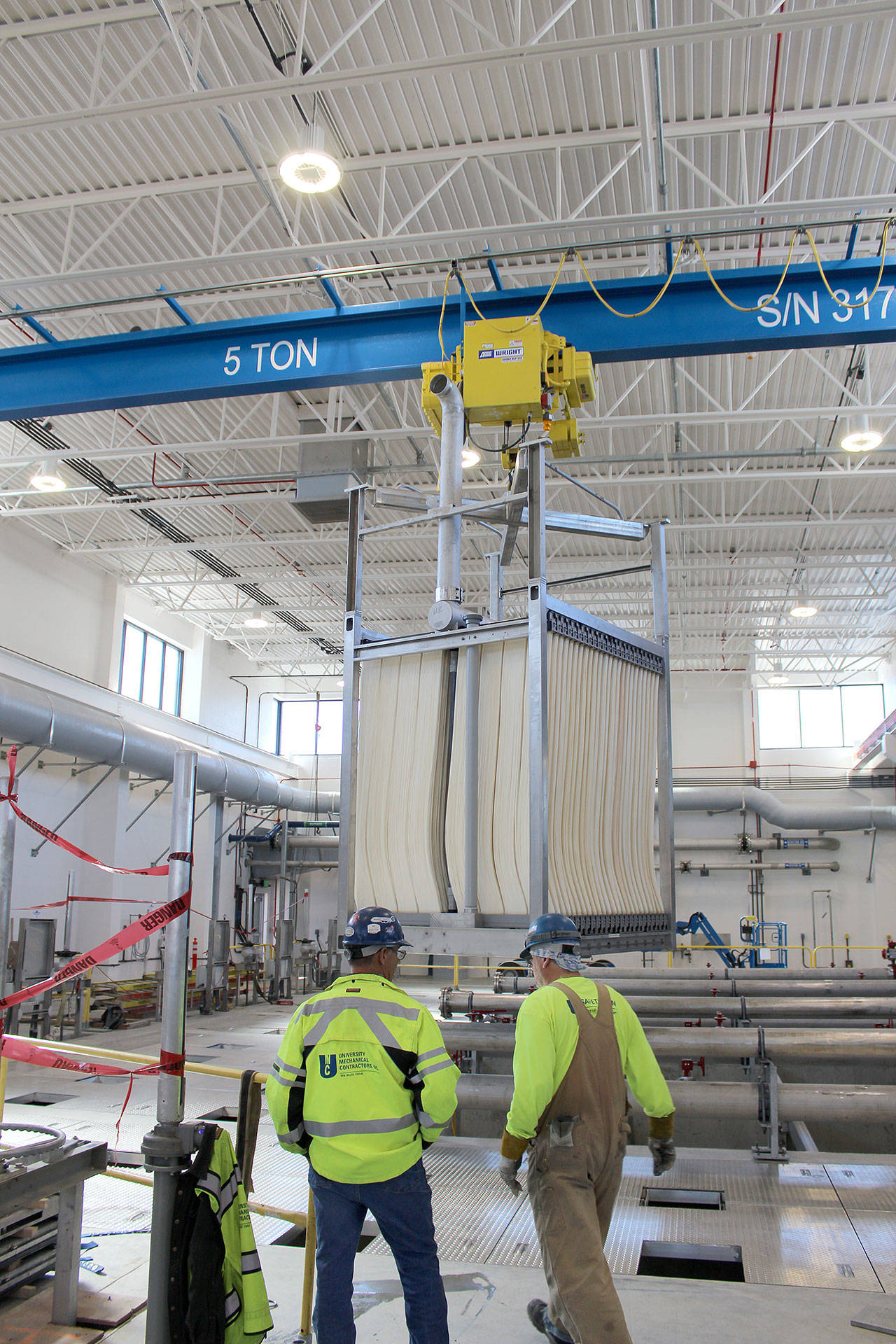The City of Oak Harbor will need to sink hundreds of thousands of dollars more into its $150-million sewage treatment plant after a rainstorm and regular use exposed design issues.
The additional equipment would cost more than half a million dollars, according to staff recommendations presented to city council members at an online workshop Wednesday.
One proposed fix is to prevent another overflow event like the one that happened in early February of this year. Heavy rainfall exceeded the capacity of the city’s treatment plant. A manhole cover exploded and water flooded several homes and about a million gallons of untreated sewage was dumped into Puget Sound.
“Overflow resulting from sewer flows was beyond our experience or expectations,” said Brett Arvidson, project manager for the sewage treatment plant. He added that “it was probably an example of the worst case event.”
To avoid a repeat of the incident in the future, staff recommended the city buy more membrane units to increase capacity. The plant is a membrane bioreactor that uses submerged membrane units for advanced filtration. The extra membranes would cost more than $550,000.
“Looking back at the February event, which I think is as bad as it’s ever going to get, if we’d had another 400-, 500-gallons -a-minute we would’ve gotten it through,” Arvidson said.
The extra membranes would give the plant 1,000 gallons per minute more of processing capacity, Arvidson explained, which should allow the plant to withstand another rainstorm like February’s and handle additional residential growth.
Arvidson said the membranes purchase would not result in a rate hike because the cost would be covered by system development fees. Later in the meeting, council members heard two options for raising the wastewater utility rate in 2021, but they were due to different cost increases at the sewage plant, specifically flood insurance and larger-than-anticipated electricity bills .
Asked why the capacity wasn’t already built into the design, Arvidson again reiterated that February’s rainstorm was unexpected.
“I thought this plant was built oversized so that we could handle anything down the road with a small amount of growth or something, but it sounds like we didn’t overbuild this facility?” asked Councilmember Jeff Mack.
In response, Arvidson said officials were trying to keep costs as low as possible on the plant and that the flooding early this year was unprecedented.
“If it hadn’t been for a peak flow event, we probably would not be too worried, but unfortunately we found the weak point and a lot of it has to do with our climate here,” Arvidson said, referring to the high amount of rains in February.
Public Works Director Cathy Rosen confirmed that the plant had been built with extra capacity.
“We did build it to allow for additional membrane cassettes to go in in the future for future capacity,” Rosen said. “The structure is there, it’s just as growth occurs, we need to buy more membranes.”
In addition to the extra membranes, the plant needs improvements to the odor control system that could cost the city an estimated $100,000.
The reason for the stench is complex, Arvidson said, but was partially due to equipment issues and a learning curve for staff. The smell was so bad that a part of the plant had to be shut down for a time, despite hopes that the city’s multi-million dollar odor control system would do the job.
Still, the plant needs additional ventilation capacity. The lowest bid for the fix came in at $51,000, and Arvidson said the city may need to buy additional equipment for another $50,000. He said that the money is in the operations budget for the fix.
Councilmember Jim Woessner asked the obvious question: “Why didn’t we think back then that a room that we were drying this stuff in was going to create any odor?”
Arvidson paused for a moment and explained that it was due, in part, in an attempt to be frugal.
“Our goal was to keep the odor control equipment inexpensive,” Arvidson said.
He admitted that the city may have been able to avoid some of the headache if it had bought the expensive equipment in the beginning.
“We thought it would work, and we were trying to save the city money. That didn’t quite work out,” he said, adding that the department now has a long-term solution for the smell.
“Hindsight is 20/20, and this has been a long process. I guess none of us is perfect – sorry.”
Mack acknowledged that the staff have a stinky material to work with, but asked Arvidson if he thought the costly fix will solve the problem once and for all.
“Yes, it will,” Arvidson said.
Staff will bring the proposal to the Oct. 6 city council meeting.



